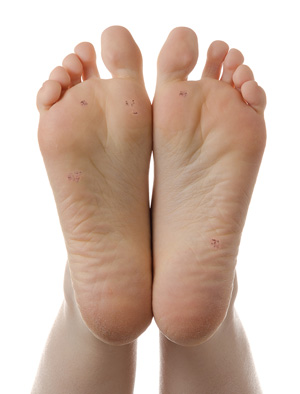Dr. Joshua Fox and Christopher Byrne, PA with Advanced Dermatology PC offer tips for treating the most common types of warts
A common virus causes most types of warts, but these small, unsightly growths can be a lot harder to shake than the common cold. According to Dr. Joshua Fox, board certified dermatologist and medical director of Advanced Dermatology in NY and NJ, “warts are blister-like growths caused by the human papilloma (HPV) virus, which enters the system through a cut or break in the skin. Warts occur on various parts of the body, most notably the hands and feet, and they’re extremely common. The good news is that warts can disappear on their own. The bad news? It can take years, and during that time, the warts may spread to other parts of your body.” Some warts can also promote skin cancer particularly in certain areas of the body and especially if the patient is immunocompromised. So warts are not to be ignored.
Tips for understanding and treating warts
Since warts are contagious, you can also infect other people through direct skin-to-skin contact or when you walk barefoot in the gym or share towels. Typically, warts have been traced to wet public places, such as pools or locker areas. However, children are more likely to get their warts elsewhere, according to a 2013 study of Dutch schoolchildren. Researchers spent 18 months studying the hands and feet of 1,100 children between the ages of four and 12 in three different schools. Rather than contracting warts from wet public places like pools and locker rooms, researchers found that children were most likely to get warts through direct contact with friends and relatives that had warts.
“Treatment can decrease the chances of the warts spreading to other parts of your body and to other people,” said Christopher Byrne, a physician assistant in the Fresh Meadows office of Advanced Dermatology.
The type of treatment used depends on the type of wart as well as the patient’s age and health. There are five different types of warts, with varying sizes and appearance, including common warts, plantar warts, flat warts, filiform warts, and periungual warts.
Many people turn to natural or home remedies at first, such as rubbing banana peels, castor oil, or apple cider vinegar on the wart, or even covering the wart with duct tape. Another option is trying over-the-counter treatments like salicylic acid (the main ingredient in products like Compound W). Some warts can be treated at home, but if these remedies are ineffective, it’s time to see a doctor, said Dr. Fox. “You should see a doctor if you have several warts, you cannot get rid of them, they are clearly spreading, or if the warts are causing pain,” he said. Sometimes what people think are warts are really something else necessitating a different type of treatment. ”Many patients will ignore warts without obtaining professional treatment, only to find the wart become larger, or spread to other parts of the body,” said Christopher Byrne.
One first-line treatment ideal for small children is putting a topical medication called Cantharidin on the wart, which causes a blister to form under the wart. After a week, the dermatologist will remove the dead wart. ”This is a great treatment as it is initially painless and does not require needles, and is also minimally invasive” says Christopher Byrne.
There are many other wart treatments in the dermatologist’s toolkit, including stronger drugs and surgical techniques. The most common include: cryotherapy (freezing the wart), excision (cutting out the wart), electrosurgery (burning the wart), and curettage (scraping off the wart). “Getting rid of warts takes time because they can be stubborn and persistent,” said Dr. Fox. One unique method that Christopher Byrne uses is using the body’s own immunity to help get rid of the wart. This is using the Candida antigen and does not hurt at all and is especially useful when the patients has many warts.
The idea behind the Candida antigen is to signal the body’s innate immune defense mechanisms to attack the wart virus. “I have found that most patients respond well to Candida, especially when other treatments have failed” says Christopher Byrne. The treatment involves a simple injection into the wart and requires re-treatment approximately every 3 weeks until the wart is gone. With a healthy immune system, most warts respond favorably even as early as the first treatment.
If warts do not respond to these therapies or they keeping returning or spreading, Dr. Fox sometimes uses laser treatments and injections of different medicines to treat warts.
Advanced Dermatology is proud to offer a comprehensive solution to one of the most common dermatological problems. If you have warts, contact us today.

